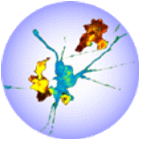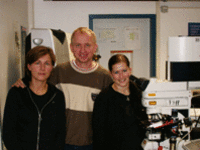Towards a cellular and molecular understanding of hereditary spastic paraplegia:
Applicants:Dr. Carola Sigrist, postdoctoral fellow, Stephan Sigrist, principal investigator Email: ssigris@gwdg.de, csigris@gwdg.de
Institution:
European Neuroscience Institute Göttingen Max-Planck-Institute for Biophysical Chemistry and Georg-August-University Göttingen Waldweg 33 37073 Göttingen
The hereditary spastic parapareses (HSP) are a clinically and genetically heterogeneous group of disorders characterized by progressive lower limb spasticity and weakness, with or without bladder disturbances, and subtle impairment of the vibratory sense. Histopathological studies show a length dependent “dying back” of the terminal ends of the corticospinal tract axons, with the longest being involved first (Schwarz and Liu, 1956). These disorders are classified as either “pure” (or “uncomplicated”), when the above features occur in isolation, or “complicated”, in the presence of additional neurological manifestations, such as mental retardation, extrapyramidal symptoms, deafness, or optic neuropathy.
Eight disease genes for HSPs have now been identified. Based on the proteins involved, several mechanisms for pathogenesis have been advanced. These include aberrant cell signaling or migration, abnormalities of mitochondrial chaperones, abnormalities of myelination, and defects in intracellular trafficking and transport (Casari and Rugarli, 2001, Crosby and Proukakis, 2002).
Proteins mutated in HSPs that have been implicated in cellular protein or vesicle trafficking include Spastin (SPG4), Spartin (SPG20; Troyer syndrome), and Atlastin (SPG3A) (Reid, 2003-1 and –2). However, functional studies are clearly required to explore the biochemical roles of these proteins in more detail, in order to confirm or refute the defective transportation hypothesis. For this purpose, establishing animal disease models and directly studying transport in living and genetically tractable cells is urgently needed. In this context, the fruit fly Drosophila has proven over the last years to be an efficient and informative model of various neurodegenerative diseases.
In this project we seek to functionally analyze three HSP genes (spastin, spartin and atlastin) using the efficient genetics of Drosophila. Flies mutant for these genes shall be produced in our lab using excision mutagensis. In parallel, transgenic RNAi strategies will be used to also allow spatio-temporal control over gene inactivation. We will first concentrate on an insight into the principal cell biological role of these factors by doing a comparative analysis of these factors during Drosophila development. To this end, antibodies and GFP-fusions will be generated to study tissue and subcellular distribution of the proteins in intact Drosophila. This will form a basis to further work out in which cellular and molecular pathways these proteins act in.
In a second step, potential defects in axonal transport (being a putative cause of HSP and neurodegeneration in principle) will be addressed. To this end, “traffick jams” and subcritical support of growing synapses at axon terminals will be investigated at the well accessible neuromuscular axons and synapses of Drosophila larvae. In this context, our lab is very familiar with electrophysiological and ultrastructural methods. Moreover, live imaging of synaptic transport using transgene-encoded GFP-labelled transport reporters is applied on acutely opened larval preparations. By applying “fluorescence recovery after photobleaching” (FRAP) strategies these experiments will directly inform us about transport rates, allowing the quantitative description of this process in response to modifications of the function of those proteins.
We hope that these experiments will strengthen our insights into the primary cell biological scenario underlying HSP diseases. It also will be tried to genetically classify human mutations on the level of our genetic assays and identified phenotypes. To do so, human mutations will be transferred into conserved positions of the respective Drosophila protein, and human proteins will be tested for functionality within the corresponding Drosophila mutants.





